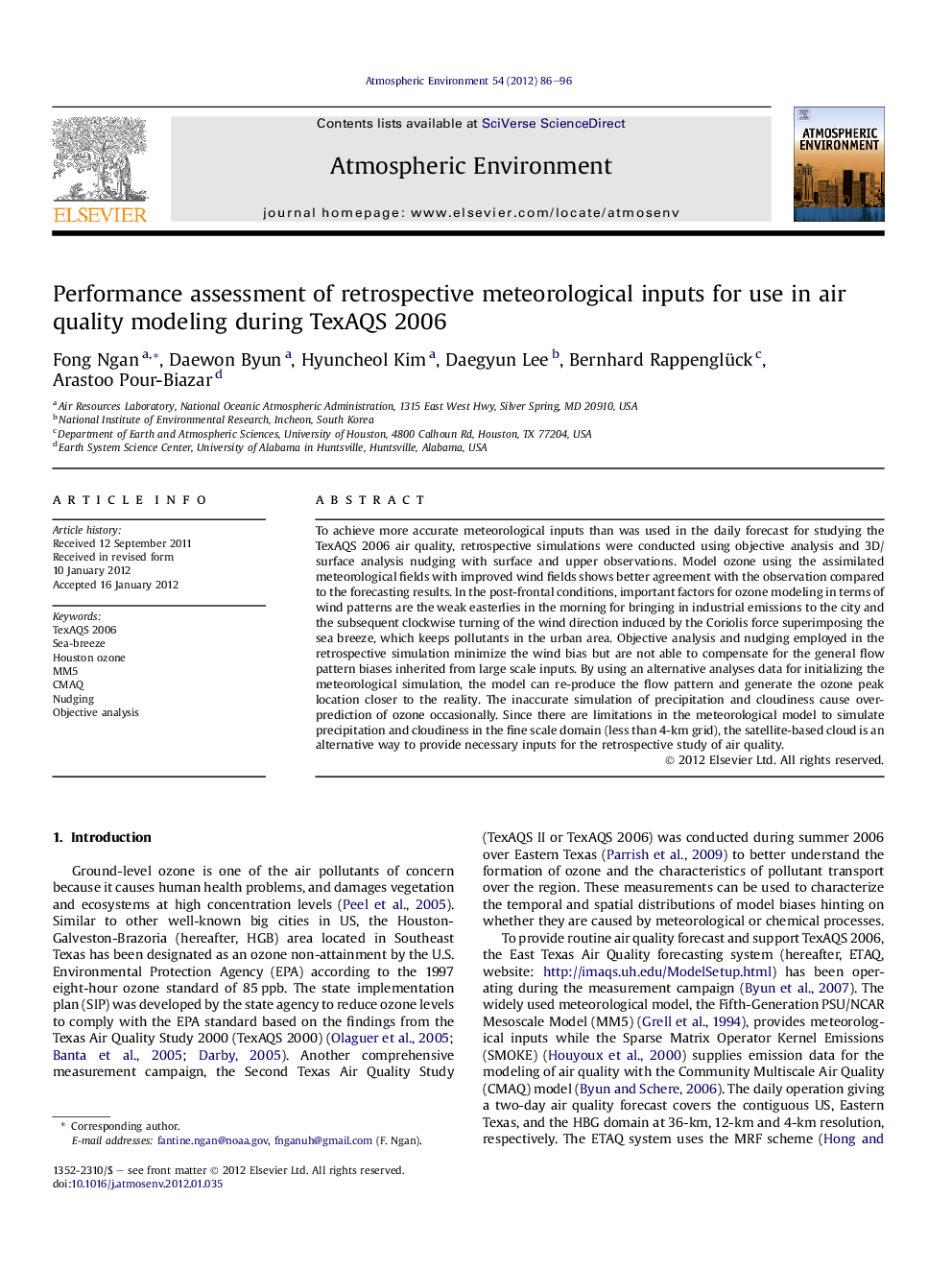| Article ID | Journal | Published Year | Pages | File Type |
|---|---|---|---|---|
| 4438774 | Atmospheric Environment | 2012 | 11 Pages |
To achieve more accurate meteorological inputs than was used in the daily forecast for studying the TexAQS 2006 air quality, retrospective simulations were conducted using objective analysis and 3D/surface analysis nudging with surface and upper observations. Model ozone using the assimilated meteorological fields with improved wind fields shows better agreement with the observation compared to the forecasting results. In the post-frontal conditions, important factors for ozone modeling in terms of wind patterns are the weak easterlies in the morning for bringing in industrial emissions to the city and the subsequent clockwise turning of the wind direction induced by the Coriolis force superimposing the sea breeze, which keeps pollutants in the urban area. Objective analysis and nudging employed in the retrospective simulation minimize the wind bias but are not able to compensate for the general flow pattern biases inherited from large scale inputs. By using an alternative analyses data for initializing the meteorological simulation, the model can re-produce the flow pattern and generate the ozone peak location closer to the reality. The inaccurate simulation of precipitation and cloudiness cause over-prediction of ozone occasionally. Since there are limitations in the meteorological model to simulate precipitation and cloudiness in the fine scale domain (less than 4-km grid), the satellite-based cloud is an alternative way to provide necessary inputs for the retrospective study of air quality.
► Weather conditions during TexAQS 2006 were assimilated with conventional observations. ► Model ozone biases were reduced when assimilated meteorological inputs were used. ► Weak easterlies and turning of wind are key factors for ozone modeling in the post-frontal conditions. ► Assimilation reduces the wind bias but cannot compensate for the biases inherited from large scale inputs. ► Satellite-based cloud is an alternative way to provide accurate inputs for air quality modeling.
